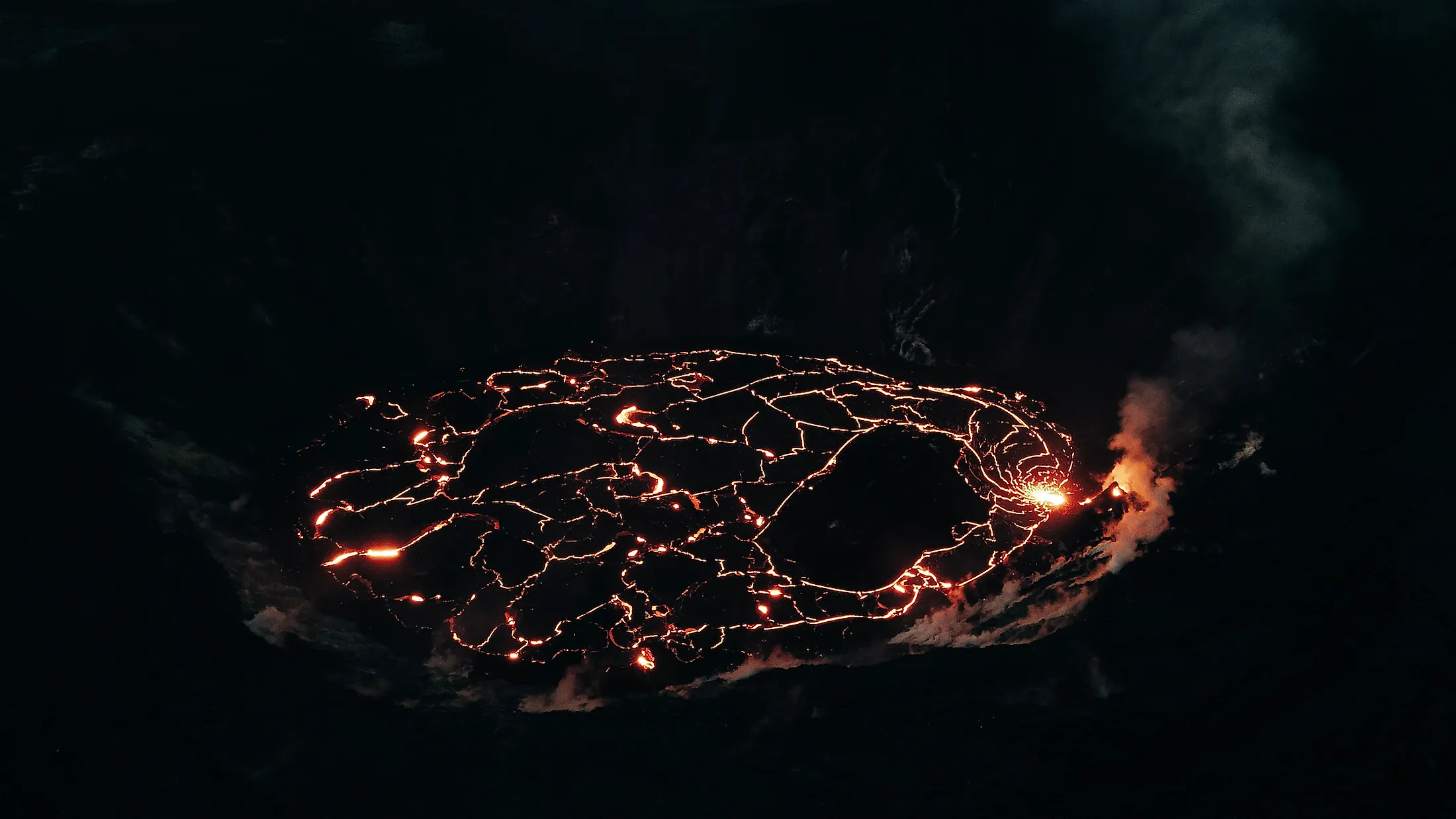
The Most Dangerous Volcanoes In The United States
Is there anything more ominous than a volcano threatening to blow? Some of these lava, debris, and noxious gas spewing giants have a demonstrable track record that leaves nearby residents palpably aware of the potential dangers. Other juggernauts lie dormant, patiently biding their time. Scientists know that it is a question of when, not if. A recent National Volcanic Threat Assessment by the U.S. Geological Survey cataloged 161 volcanoes throughout the country, 18 of which are considered a "very high threat." The following are at the top of the watchlist.
1. Kīlauea, Hawaii
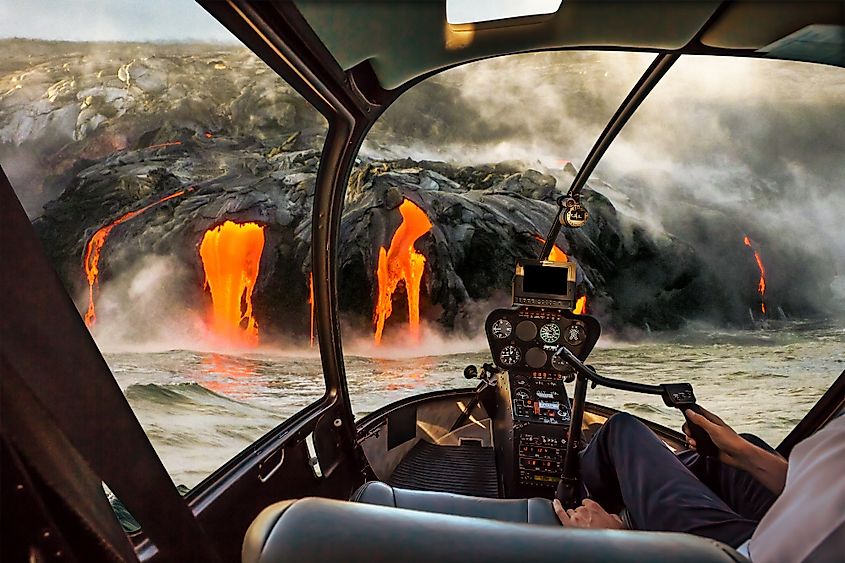
Kilauea is the youngest volcano on the Island of Hawai'i, but it is also one of the world's most active and the country's most dangerous. Kīlauea has erupted dozens of times since 1952, with almost continuous activity between 1983 and 2018. For ten full years between 2008 and 2018, the summit of this shield volcano contained a lava pond, which gave off an intense gas plume. This pond once again formed in the Halema'uma'u crater after an eruption that lasted between December 2020 and May 2021 and fed yet another eruption which began in September 2021 and is still persisting today.
2. Mount St. Helens, Washington
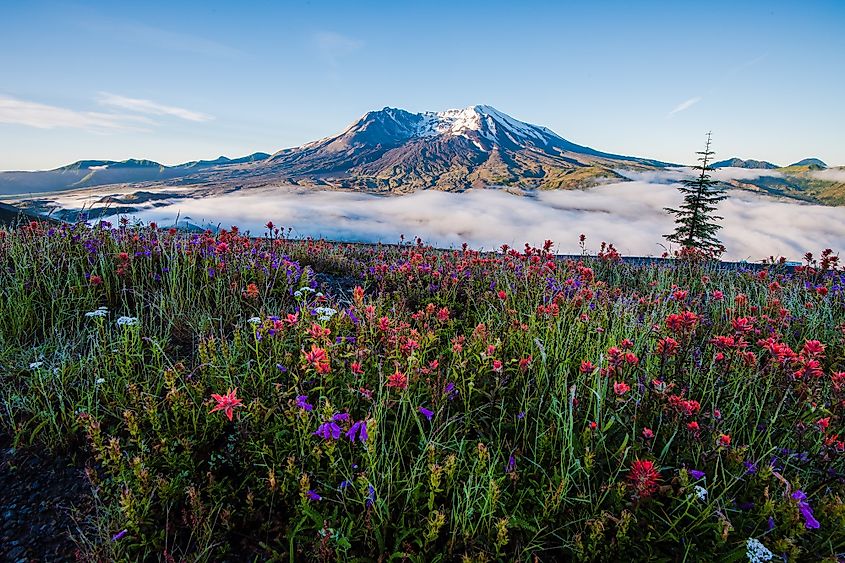
Mount St. Helens is the most active volcano in the Cascade Range and is also part of the Ring of Fire, a notorious region of volcanic and seismic activity that spans from the West Coast of South America all the way to Alaska and the Aleutian Islands. Mount St. Helens has oscillated between violent and dormant periods throughout its history. On May 18, 1980, a particularly devastating eruption occurred. This event wiped out thousands of acres of land, including the wildlife, and spewed an ash cloud so large that it circled the globe and darkened the sky for hundreds of miles around the site. In the end, over 50 people lost their lives.
3. Mount Rainier, Washington
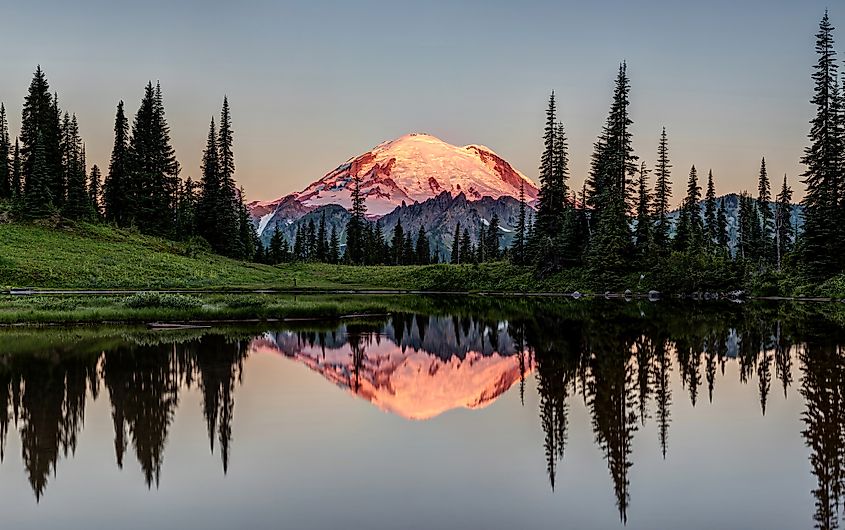
This 14,410-foot stratovolcano has been active for the last half-million to one-million years, oscillating between periods of high and low-volume eruptions. It is estimated that lava flows probably spewed 1,000 feet into the air above the already sizable summit in the past. The most recent eruption phase ended approximately 1,000 years ago, but due to its position in a subduction zone, the collision of tectonic plates causes around 20 minor earthquakes each year. Mount Rainier is considered dangerous not only for its eruption potential but also because of the risk of significant debris flows, which could impact the 3.3-million residents in the Seattle Tacoma area, but also the Columbia River drainage system flowing towards another 500,000 residents in Southwestern Washington and Northwestern Oregon.
4. Redoubt Volcano, Alaska
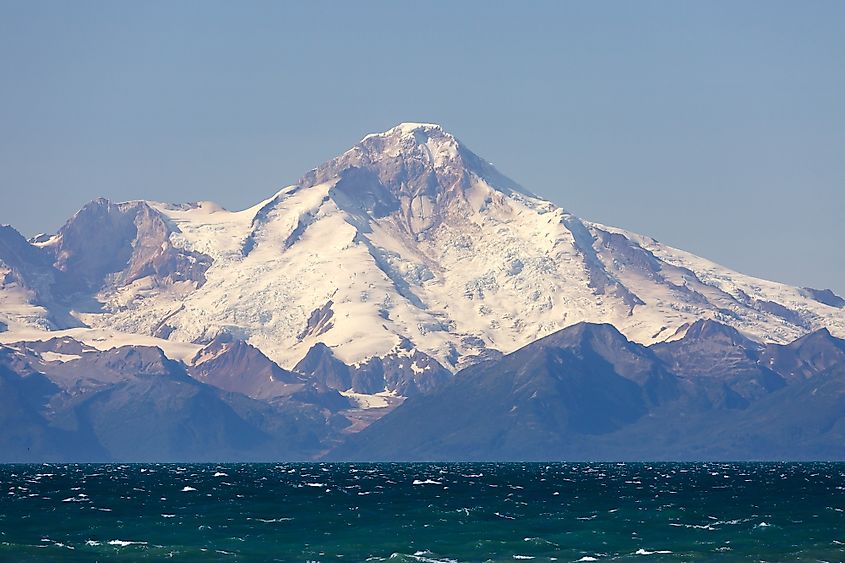
Located in the Chigmit Mountains, within Lake Clark National Park and Preserve, this 10,197-foot active Alaskan volcano has a recent track record of naughty behavior. Redoubt erupted in 1902, 1966, 1989-90, and 2009. The potential for further activity poses a threat to the four villages/towns within 50-miles of the volcano and the city of Anchorage, which is 108-miles to the Northeast. To get a sense of Redoubt's power, it gave off 23 major explosions between December 1989 and April 1990. During this eruption, a Boeing 747 was on an unlucky route through the ash cloud. Even high in the sky, the airplane still experienced full engine failure for a tense period before successfully making it to Anchorage.
5. Mount Shasta, California
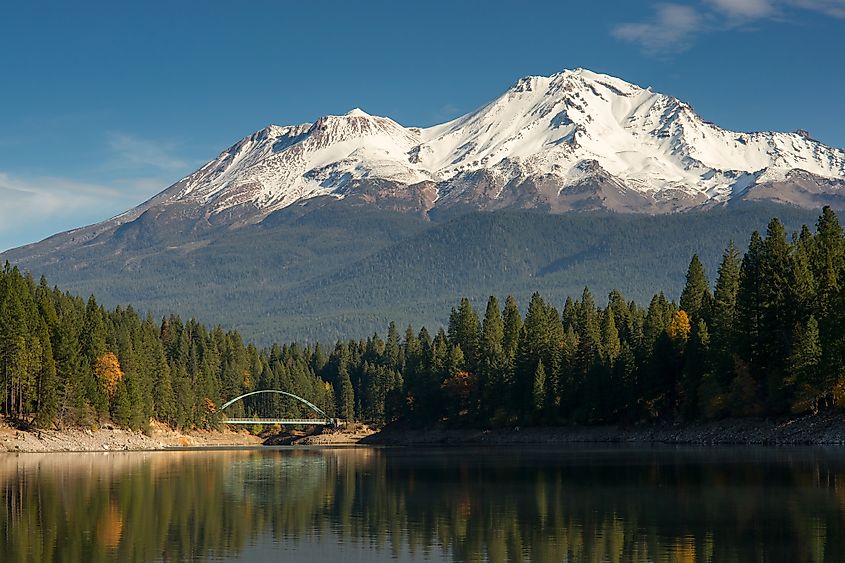
Mount Shasta, located in the Cascade Range of Northern California, is a relatively new formation that spawned from the remains of another volcano that collapsed approximately 300,000 to 500,000 years ago. The resulting landslide from this colossal event covered more than 170-miles of Shasta Valley, making this one of the largest known landslides on earth. The modern Mount Shasta volcano is the most voluminous of its Cascade Range fiery brethren. Though the 14,163-foot peak is blanketed in ice and snow, the settlements that sit in its shadow (Weed, Mt. Shasta City, McCloud) know not to underestimate its capabilities. The eruption record suggests at least one event every 600 to 800 years. Even in non-eruption years, heavy rainfall frequently causes mudflows that run into the surrounding stream channels.
6. Mount Hood, Oregon
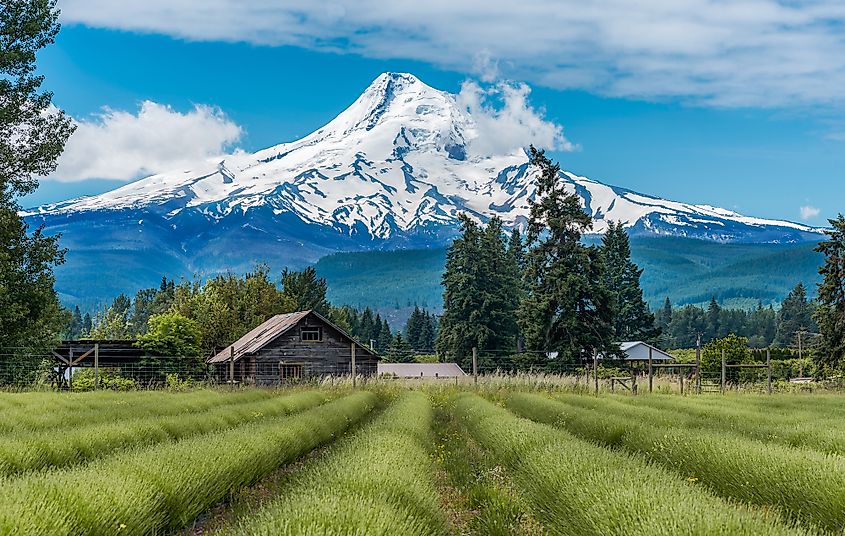
Oregon's highest peak provides valuable resources for the agricultural and tourism sectors of the city of Portland and the surrounding area. However, Mount Hood is also a testy volcano blowing its lid for the last half-million years, with two major eruptions occurring in the last 1,500 years. The resulting flows and debris can choke the vital river systems long after the eruption itself has ceased. The devastation to the Sandy River caused by the 1781 eruption was even reported by the Lewis and Clark Expedition in 1805-06. The last explosive activity occurred in the mid-1800s and was reported to be minor. Since then, Mount Hood has stood as a calm and scenic backdrop for Oregon's biggest city. Fingers crossed it stays that way.
Honorable Mention: Yellowstone Supervolcano, Wyoming
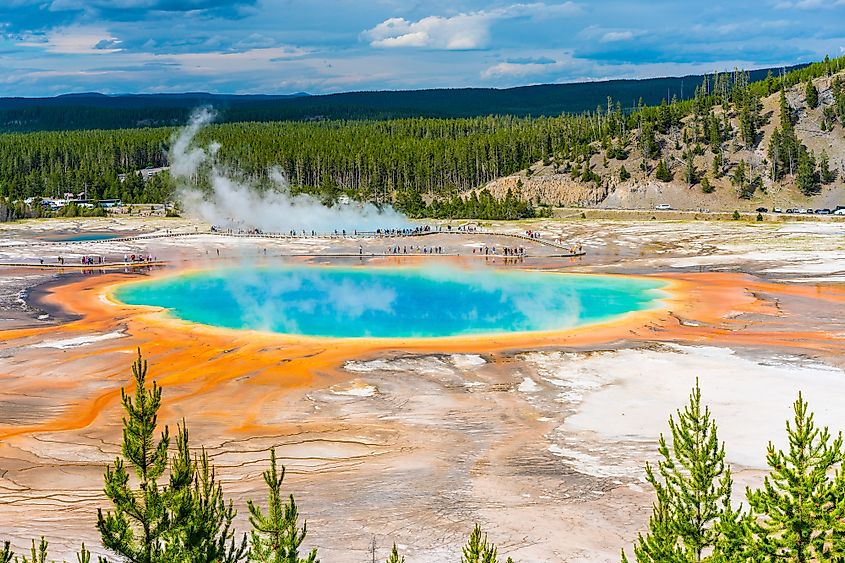
Though it is not expected to pop anytime soon (scientists are monitoring it closely), the Yellowstone Supervolcano has proven to be unfathomably dangerous in the past. Its first massive eruption took place 2.1 million years ago. In the aftermath, over 5,790 square miles were covered in ash. This makes it one of the largest eruptions ever known. Then, 640,000 years ago, another major eruption caused the ground to collapse into a lake of lava. The resulting caldera, though filled in by further lava flows, still measures 30 by 45 miles. Thankfully, the Yellowstone Supervolcano has been dormant for 70,000 years and shows no signs of a brewing eruption. Scientists would expect months of seismic warning in advance of another significant explosion.
The long and capricious lifespan of volcanoes sees their destructive tales spread from legends to breaking news stories. Of the 161 volcanoes cataloged by the U.S. Geological Survey, these are the big dogs to watch out for. Though they may look solid, these beautiful and terrifying peaks can quickly reshape their image and the surrounding landscape. Enjoy them while you can, keep your eye on the latest warnings, and when the time comes, get the heck out of Dodge.
The 18 Most Dangerous Volcanoes In The United States
| Rank | Volcano included in the “very high threat” category | US State where the volcano is located |
|---|---|---|
|
1 |
Kīlauea |
Hawaii |
|
2 |
Mount St. Helens |
Washington |
|
3 |
Mount Rainier |
Washington |
|
4 |
Redoubt Volcano |
Alaska |
|
5 |
Mount Shasta |
California |
|
6 |
Mount Hood |
Oregon |
|
7 |
Three Sisters |
Oregon |
|
8 |
Akutan Island |
Alaska |
|
9 |
Makushin Volcano |
Alaska |
|
10 |
Mount Spurr |
Alaska |
|
11 |
Lassen volcanic center |
California |
|
12 |
Augustine Volcano |
Alaska |
|
13 |
Newberry Volcano |
Oregon |
|
14 |
Mount Baker |
Washington |
|
15 |
Glacier Peak |
Washington |
|
16 |
Mauna Loa |
Hawaii |
|
17 |
Crater Lake |
Oregon |
|
18 |
Long Valley Caldera |
California |











